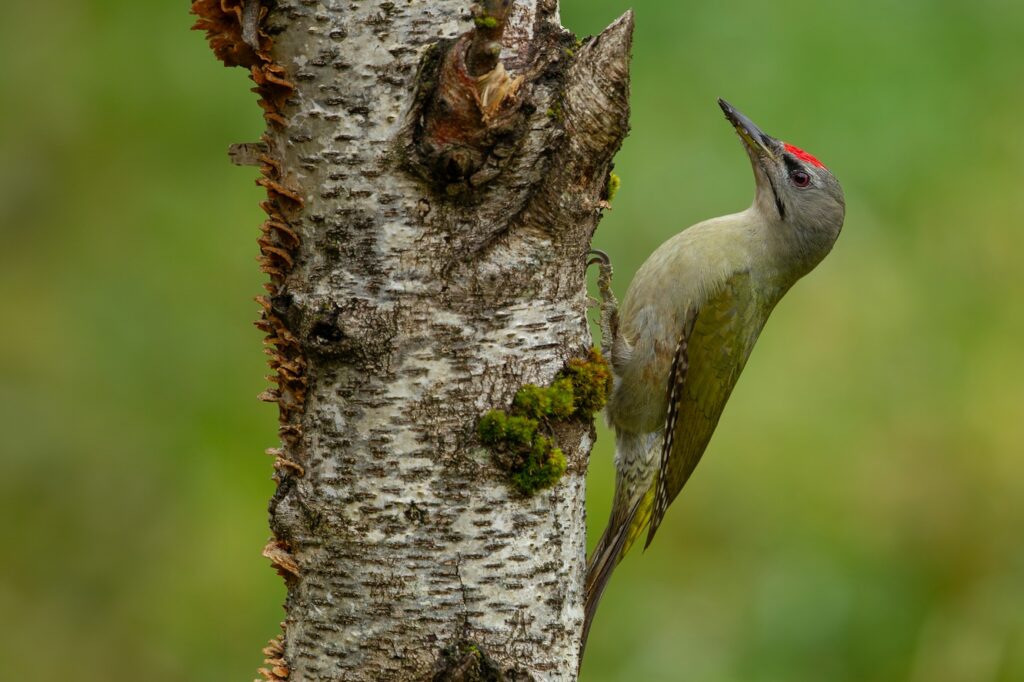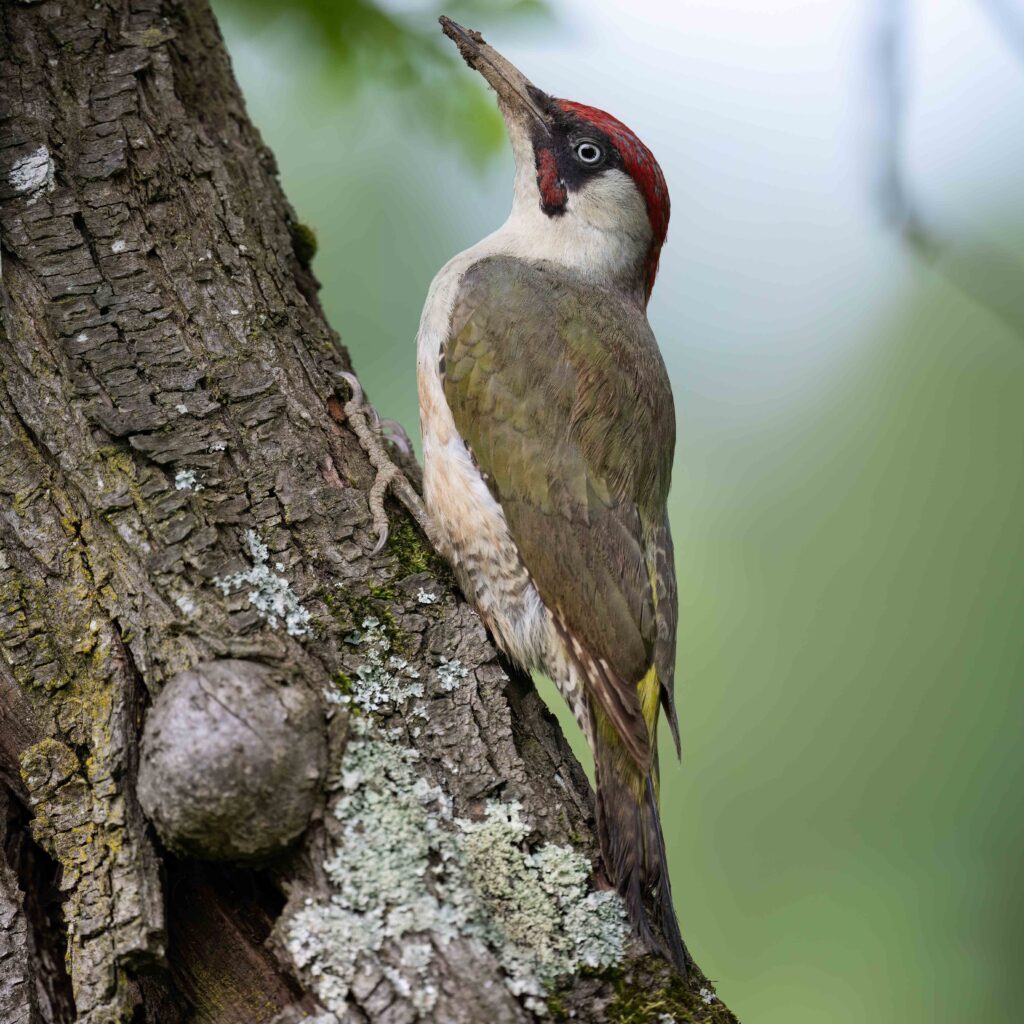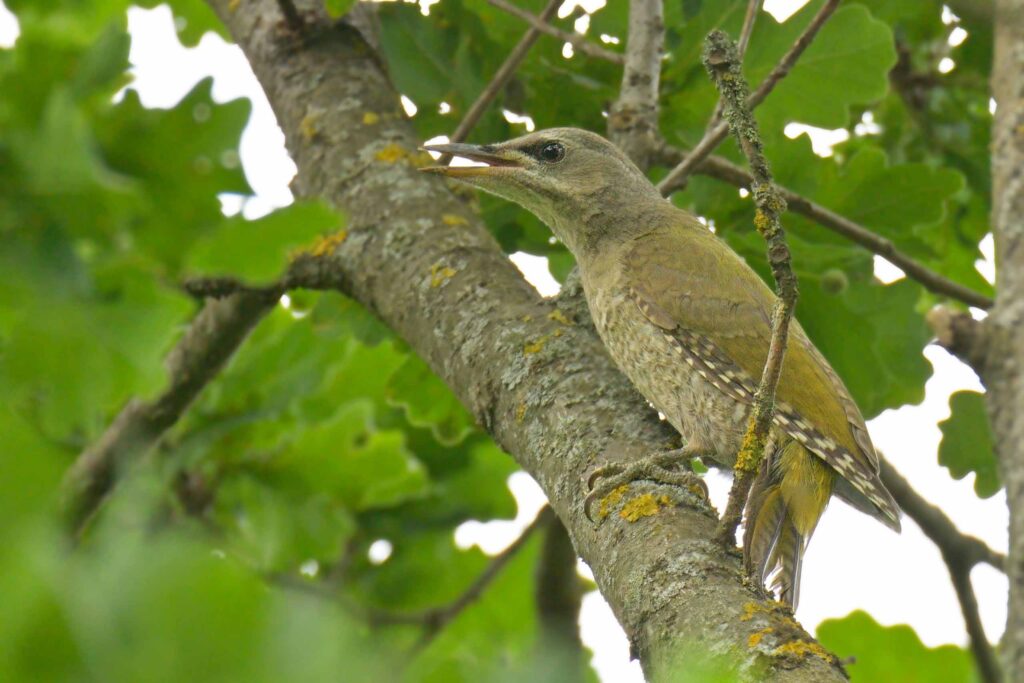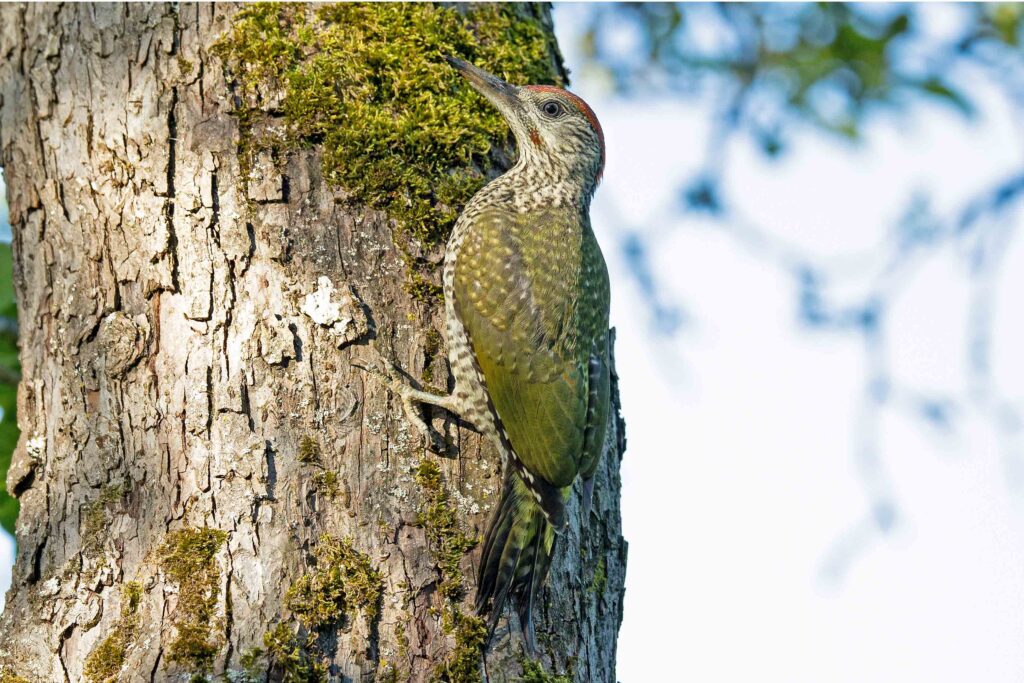The Green Woodpecker (Picus viridis) and the Grey-headed Woodpecker (Picus canus) are closely related, but judging from their names, one would expect their coloration to be rather different—which, in reality, is not the case. At first glance, both species appear predominantly green. The English naming is a little more accurate: while the Green Woodpecker is translated directly as in German, the Grey-headed Woodpecker is more aptly named, since its most distinctive feature is indeed the grey head.
Not only in appearance but also in lifestyle, the two species are very similar. They are sometimes referred to as “ground woodpeckers,” because they forage mainly on the ground, specializing in ants, which they extract from their nests with the help of their exceptionally long, sticky tongue. They are often seen in rapid, undulating flight, which makes it challenging to “catch them in the binoculars” quickly enough to spot key identification details. This is where a wide field of view in binoculars proves advantageous. A larger field of view allows quicker detection of birds in flight and increases the chances of identifying them before they disappear behind trees or shrubs. For this reason, 8x magnification is often more practical than 10x, since the latter inevitably comes with a smaller field of view within the same model range. In many cases, less magnification actually means an advantage, since the benefit of higher magnification is offset by natural hand tremors.
Both Green and Grey-headed Woodpeckers inhabit wooded areas, though the Green Woodpecker clearly prefers more open habitats with fewer trees. Traditional orchards, extensively managed gardens with trees, and semi-open woodland edges are its preferred environments. By contrast, the Grey-headed Woodpecker is a typical forest bird. Unfortunately, this habitat difference cannot be relied upon as a strict identification criterion, since outside the breeding season, the ranges overlap considerably—Green Woodpeckers may be encountered deep in forests, and Grey-headed Woodpeckers may show up in gardens.


The Grey-headed Woodpecker is slightly smaller than the Green Woodpecker, though this is only noticeable when the two species are directly compared. It also has a somewhat shorter bill and neck, but a relatively longer tail. For identification, it is best to focus on the head and neck. The otherwise pale head of the Green Woodpecker shows a contrasting broad black “mask” around the eye. The iris itself is pale in both sexes, while in the Grey-headed Woodpecker the eye is dark. The latter lacks a black mask altogether; instead, it has an overall grey head with a narrow black lore stripe and a fairly thin black moustachial stripe. Only the male carries a small red patch restricted to the forehead. By contrast, both sexes of the Green Woodpecker display a prominent red crown, extending from the upper base of the bill to the nape, which is highly visible and a reliable identification feature, whether perched or in flight. The dark moustachial stripe of the Green Woodpecker is very broad and bluntly cut off at the rear. In females it is entirely black, while in males it is red with a black border—making it appear almost as dark as in the female. In practice, distinguishing the sexes is often only possible in good light conditions.


Juvenile Green Woodpeckers are relatively pale and already show a faint red crown, heavily interspersed with grey mottling. The rest of the head plumage is spotted dark on a pale ground, with this pattern continuing across the neck, breast, and belly, down to the finely barred undertail coverts. In contrast, juvenile Grey-headed Woodpeckers are largely unspotted on the head and neck, appearing plain grey to grey-olive.
Both species are very vocal and draw attention through their loud territorial calls. The Green Woodpecker typically produces series of relatively harsh kjü-kjü-kjü… notes of varying length, with only a slight drop in pitch toward the end. The Grey-headed Woodpecker’s call is similar but softer and more fluting, küü-küü-küü…, and shows a much more continuous downward inflection across the series. Since the female Green Woodpecker also calls somewhat more softly than the male, voice identification can be tricky for beginners—hence the recommendation to confirm with good binocular views whenever possible.
Both species drum, though the Green Woodpecker does so less often, with short, weak, and irregular bursts lasting about one second. The Grey-headed Woodpecker, on the other hand, drums regularly, nearly twice as long and louder, with a clear intensification toward the end of the drumming sequence.